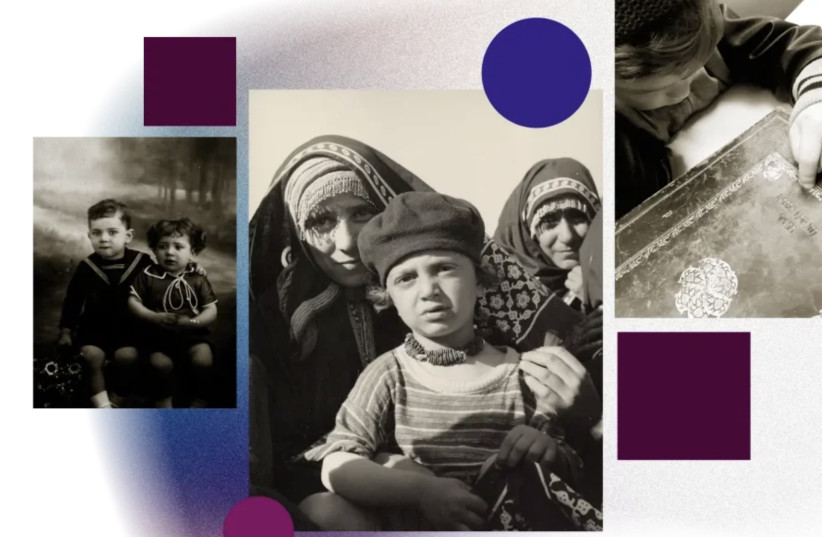Pew Research Center’s study of Jewish Americans in 2020 reports that only 66% of Jewish Americans identify as Ashkenazi, and many Jewish day schools and informal educational programs are struggling to meet the needs of increasingly diverse student bodies.
Moreover, research indicates that when students feel they belong in a school environment, they are more likely to demonstrate academic achievement, academic motivation, and resilience. Developing a school culture that recognizes and celebrates students’ diverse backgrounds can enhance students’ sense of school belonging and the feeling that they are valued.
JIMENA has spent the last 20 years raising awareness about Sephardi and Mizrahi communities. Now, thanks to the generous support from the Covenant Foundation, we have the opportunity to expand our efforts and reach 12,000 students with a Sephardi & Mizrahi Education Toolkit (sepharditoolkit.org).
This is the first-ever comprehensive guide with content, resources, and strategies to help schools shape campus events, develop campus culture through videos, displays, and essays, and integrate curricula that welcome and reflect Sephardi and Mizrahi Jewish life.
Benefiting more than day school teachers, the toolkit includes resources for guidance staff, lay leaders, programming staff, school leaders, families, and others.

School leaders are prompted to ask basic questions to help unpack their dominant culture: What do students learn about Sephardi and Mizrahi artists? What melodies are used in prayer? How are holiday programs structured? To meet the needs of Jewish families today – and to celebrate our history and people in their entirety – schools must embrace this type of change.
Educators can explain that Judaism is practiced in a variety of ways
Educators and institutional leaders can shift away from a monolithic narrative of American Jewry and instead model a multi-layered, multicultural view of American Jewish communal and religious life.
To reach these outcomes, the toolkit provides day school educators with guidance and resources to create learning environments that respond to Sephardi and Mizrahi students' and families' cultural, religious, and social-emotional needs. While there are some broad-stroke strategies, there are also very concrete curricular recommendations and policy suggestions.
Dr. Elana Riback Rand, the Toolkit’s editor, explains, “Everyone in a school community plays a role in shaping a day school’s educational experiences, in and out of the classroom. Broadening the curricular scope of Jewish experiences will help more students and families feel represented and valued, and students will then be better set up for academic success.”
With this in mind, we designed the toolkit to be comprehensive, with tools for a full school assessment, along with resources and strategies covering arts and music education, Jewish history, prayer, holidays, Israel, Bible, and STEM (science, technology, engineering, and math).
The Toolkit draws from a wide range of resources, including primary sources, archival materials, newspaper articles, and videos.
Educators will be able to cull information from libraries, university collections, oral history recordings, and rabbinic sources. Having access to this content can expand the learning experience beyond current curricula. For example, much of Holocaust education is centered on Europe.
However, there is a vital Sephardic and North African experience to discuss when relating to the Shoah. Educators, until now, have not had anywhere to turn for lessons and information on this subject.
Our resources on the devastating impact of the Holocaust on Sephardi and North African communities will provide useful guidance for many Jewish educators and be able to offer a more thorough and comprehensive lesson plan.
We are excited about the potential to create change on a large scale in day schools across the country. Adaptations and adoptions of Sephardic pedagogies and worldviews into modern educational spaces can naturally help Jewish schools become more inclusive of all students, especially those who are ethnically and culturally diverse. With this approach, schools will be able to provide students with a deeper and more accurate understanding of Jews worldwide and in the United States in particular.
The writer is director of education at JIMENA’s Sephardic Leadership Institute. Join JIMENA for a “Tour of the Sephardi & Mizrahi Education Toolkit” (bit.ly/sepharditoolkit) with editor Dr. Elana Riback Rand on Tue., March 26 (11:30 a.m. PST) and Ty Alhadeff, JIMENA’s director of education on Wed., March 27 (11:30 a.m. PST).
